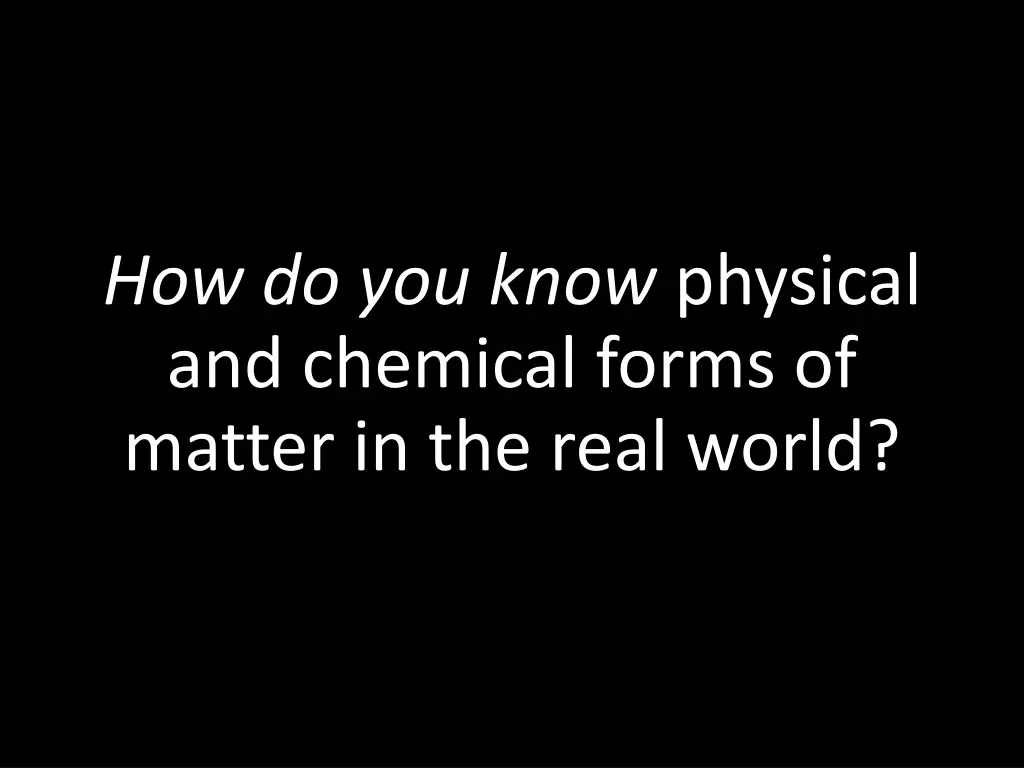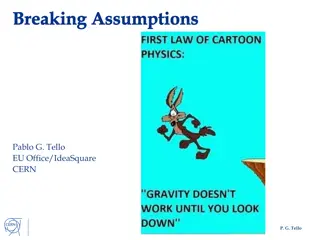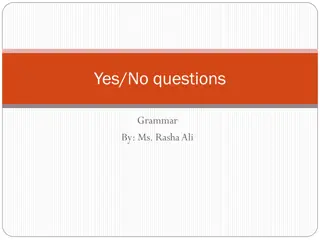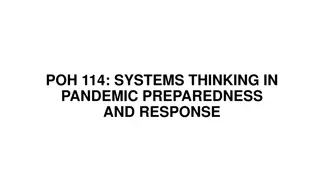
Understanding Physical and Chemical Forms of Matter in Real World
Explore the physical and chemical forms of matter in the real world through examples such as the fracking case study. Learn how to identify different forms such as solid, liquid, gas, and dissolved, and understand when a chemical is dissolved. Discover the possible physical and chemical forms of substances like benzene, methane, and more in the context of environmental data.
Download Presentation

Please find below an Image/Link to download the presentation.
The content on the website is provided AS IS for your information and personal use only. It may not be sold, licensed, or shared on other websites without obtaining consent from the author. If you encounter any issues during the download, it is possible that the publisher has removed the file from their server.
You are allowed to download the files provided on this website for personal or commercial use, subject to the condition that they are used lawfully. All files are the property of their respective owners.
The content on the website is provided AS IS for your information and personal use only. It may not be sold, licensed, or shared on other websites without obtaining consent from the author.
E N D
Presentation Transcript
How do you know physical and chemical forms of matter in the real world?
What Physical Forms Are Present? How do you know the physical forms of the chemicals in the fracking case study (list below)? Are they in solid, liquid, gas, and/or dissolved form? NOTE to Instructor: Along with this slide, I show the graphic titled Dangers of Fracking in this article: Here s How Fracking Causes Water Pollution (5th image/graphic, under the section titled Does Fracking Cause Water Pollution? ) This helps students visual the system. Radium (Ra-226), methane (CH4), ethane (C2H6), 2-n-butoxyethanol (C6H14O2), bromine (Br), benzene (C6H6), toluene (C7H8), methanol (CH3OH), ethanol (C2H5OH), strontium (Sr), arsenic (As), selenium (Se), ethylbenzene (C8H10), xylene (C8H10) Nearpod Poll!! NOTE to Instructor: Question in Slide Notes
Identifying Possible Physical Forms Example: benzene (C6H6) gas Boiling point 80 C NOTE to Instructor: I show the Dangers of Fracking graphic again here, to help students visual how there may be different temperatures present at different locations in the fracking system. liquid Melting point 6 C solid Environmental data from the case study: Look up melting points and boiling points for chemicals using the PubChem Online Database: https://pubchem.ncbi.nlm.nih.gov/
How Do You Know When a Chemical is Dissolved? NOTE to Instructor: I show images here from my course textbook that help students visualize what something looks like when it is dissolved. I like to use an image of Na+ ions surrounding by water molecules with partial charges, as well as images that show the something dissolved is a homogeneous mixture. There are many different types of solutions, but to simplify: Any thing that is uniformly/evenly distributed throughout water is dissolved. (A solution is a homogeneous mixture, Chapter 8)
What Chemical Forms Are Present? NOTE to Instructor: I show the Dangers of Fracking graphic again here, to help students see what types of matter are present in the system (solid rocks, water where something could be dissolved, air in the atmosphere, infrastructure of the fracking system, etc). How do you know the possible chemical forms of the chemicals in the fracking case study (list below)? Could they be present as atoms (neutral), ions (charged), molecules and/or ionic compounds? Radium (Ra-226), methane (CH4), ethane (C2H6), 2-n- butoxyethanol (C6H14O2), bromine (Br), benzene (C6H6), toluene (C7H8), methanol (CH3OH), ethanol (C2H5OH), strontium (Sr), arsenic (As), selenium (Se), ethylbenzene (C8H10), xylene (C8H10) Nearpod Poll!! NOTE to Instructor: Question in Slide Notes
Identifying Possible Chemical Forms Is the chemical a compound? Ex: methane (CH4) yes no Are the elements metals or nonmetals? Is it a noble gas? yes no Two of same nonmetal? nonmetals metal + nonmetal neutral atom molecule ionic yes yes no compound Is it an acid? ion no
Most of the time. (for this General Chemistry course) nonmetal + nonmetal = covalent = molecule metal + nonmental = ioniccompound Image by Denise Chan as licensed under CC BY-SA 2.0
polyatomic ions often network covalent solids When Are Atoms Present? You can assume it is almost never!! noble gases (8A) often present as atoms (neutral) (except: 8A, B, C, and Si) 8A Image by Denise Chan as licensed under CC BY-SA 2.0
Atom and Ion Call-and-Response! When I say Atom you say No charge Me: Atom!! Students: No charge!! When I say Ion you say Charged! Me: Ion!! Students: Charged!! When I say Atom you say Neutral Me: Atom!! Students: Neutral!! atom: protons = electrons cation: protons > electrons anion: protons < electrons Image by AG Caesar as licensed under CC BY-SA 4.0






















